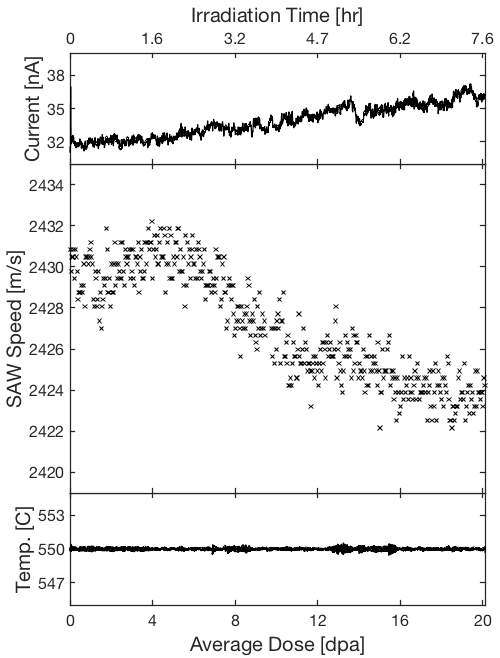| Seminar of Prof. Micheal Short from MIT "In situ measurement of radiation damage with transient grating spectroscopy" |
| 发布时间: 2018-06-15 浏览次数: 149 |
|
1Massachusetts Institute of Technology, Cambridge, MA, USA (hereiam@mit.edu) 2Sandia National Laboratory, Albuquerque, NM, USA Materials issues are the main factors holding back life extension of light water reactors and deployment of advanced reactors. Radiation damage still limits the lifetime of current and future nuclear reactors, but our ability to quickly gauge its extent is severely limited. In this talk, we will introduce our improvement [4] and application of transient grating spectroscopy (TGS) [1-5] to study how materials behave during irradiation on the mesoscale. Changes in thermal diffusivity are linked to defect clustering and radiation induced segregation (RIS) in both pure metals and neutron-irradiated steels, while changes in stiffness correlate strongly to the onset of void swelling. This technique reduces the time to acquire key knowledge of material property changes under irradiation from months to hours, greatly speeding up our ability to better understand radiation resistant materials, and gauge their lifetimes in nuclear applications.
Figure 1: A long-exposure photograph of our TGS facility at MIT, with pump (green) and probe (red) lasers A number of studies will be presented along this theme, demonstrating the utility of this new technique for radiation materials science. We will specifically show how changes in surface acoustic wave (SAW) speed, which directly link to Young’s Modulus and Poisson’s ratio, can identify the radiation dose in DPA to the onset of void swelling in single crystal copper and nickel. Radiation-dependent changes in thermal diffusivity help show the saturation of radiation-induced dislocations and defect clustering in single-crystal niobium irradiated with Si ions, while the same thermal diffusivity changes reveal the onset and saturation of radiation induced segregation in neutron-irradiated 304 stainless steel to 28 DPA. Finally, a number of studies, ranging from deducing thermal properties of irradiated carbon nanotube coatings, MAX phase materials, tungsten fuzz development for fusion applications, and illustrating temperature-dependent radiation effects in SiC will be shown to show the broad applicability of TGS.
Figure 2: Drop in SAW speed (left) corresponding to the onset of void swelling in single crystal copper (center, [1]), and in-situ detection of the same in single crystal nickel (right, submitted for publication) References 1. Dennett, C. A. et al. "Detecting self-ion irradiation-induced void swelling in pure copper using transient grating spectroscopy." Acta Mater.145:496-503 (2018). 2. Cometto, O. et al. "A thermal study of amorphous and textured carbon and carbon nitride thin films via transient grating spectroscopy." Carbon130:355-361 (2018). 3. Dennett, C. A., Short, M. P. "Thermal diffusivity determination using heterodyne phase insensitive transient grating spectroscopy." J. Appl. Phys. (Accepted) (2018). 4. Dennett, C. A., Short, M. P. "Time-resolved, dual heterodyne phase collection transient grating spectroscopy." Appl. Phys. Lett.110:211106 (2017). 5. Dennett, C. A. et al. "Bridging the gap to mesoscale radiation materials science with transient grating spectroscopy." Phys. Rev. B94:214106 (2016). |



